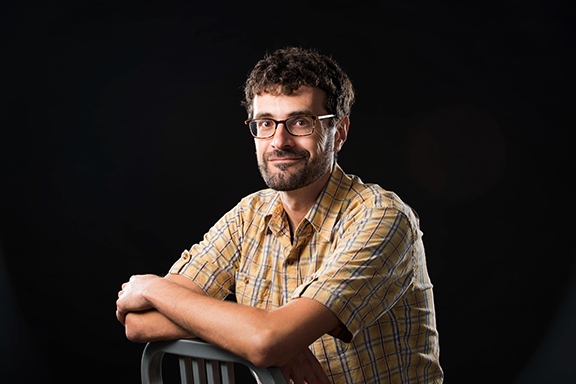
School of Art, Art History & Design Assistant Professor of Art History Philip Sapirstein was awarded nearly $11,000 by Harvard University’s Loeb Classical Library Foundation to support his Olympia research during the 2017-2018 academic year.
“I’m honored and very grateful for the generous support of my research at Olympia as the fieldwork draws to its conclusion,” Sapirstein said.
The Loeb Classical Library Foundation awards fellowships to qualified scholars to support research, publication, and other projects in the area of classical studies.
The Digital Architecture Project has been directed by Sapirstein since its first season in 2013 at ancient Olympia—the renowned sanctuary of Zeus and the birthplace of the ancient Olympic games. Sapirstein's research has focused on the Temple of Hera, under construction by ca. 600 B.C., and one of the best preserved monuments in all of Greece. The Heraion is also one of the first temples that can be classified as Doric, the iconic architectural style that later was the model for the Parthenon in Athens. Sapirstein has long been interested in where and how Greeks developed their architectural styles and technologies, and resolving the longstanding debates about the original appearance of the Heraion at Olympia is central to answering these questions.
The project in 2013–2015 focused on cleaning the huge temple site (whose ruins extend over about a third of a football field) in preparation for a new 3D modeling technology know as photogrammetry. From a series of about 3,500 images taken from different vantages points throughout the site, new software identifies overlapping photographs, restores their exact locations by comparing features seen in both pictures, and from there calculate with very high precision the 3D surfaces of the temple.
About 2000 square meters (half an acre) has been modeled this way at a resolution of 1mm, allowing us to see the whole site on the computer in extraordinarily high detail. Among other things, the new models have allowed Sapirstein to reconstruct digitally the original positions on the colonnades of several dozen fallen column drums and capitals.
This summer, Sapirstein returned to Olympia to examine other material from the fallen superstructure of the temple, notably terracotta roof tiles stored in the back rooms of the archaeological museum. A new method—designed last year at the University of Nebraska State Museum, and taught last semester to UNL students in a course about photogrammetry—resulted in detailed 3D models of 80 museum objects, which will be the basis for a new visualization of the lost upper structure of the temple.
During the 2017–2018 academic year, Sapirstein is working on a website that will allow visitors to explore the 3D models of the Heraion and learn more about the temple.
The research at Olympia and UNL has also been supported since 2013 by the Hixson-Lied College of Fine and Performing Arts and the School of Art, Art History & Design.